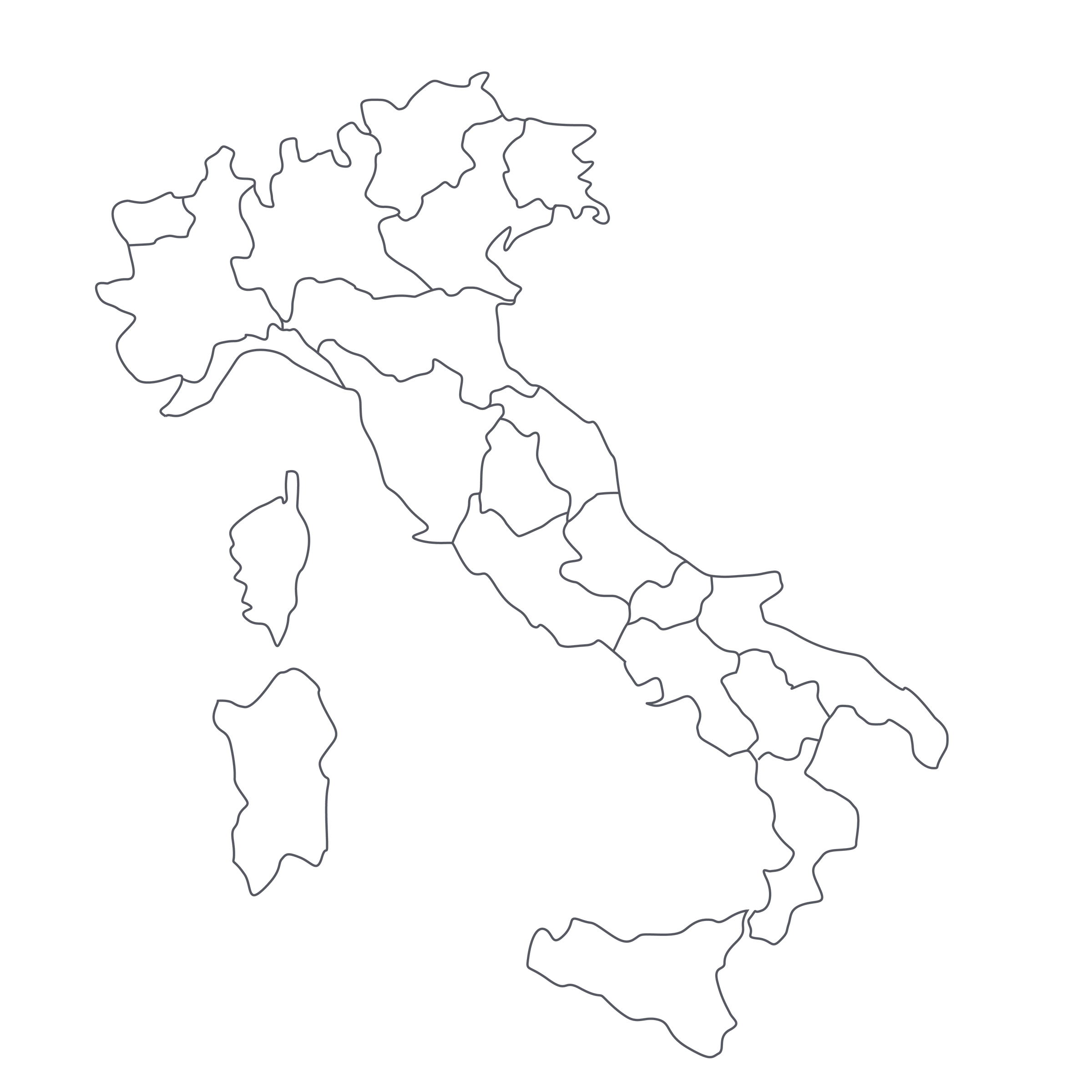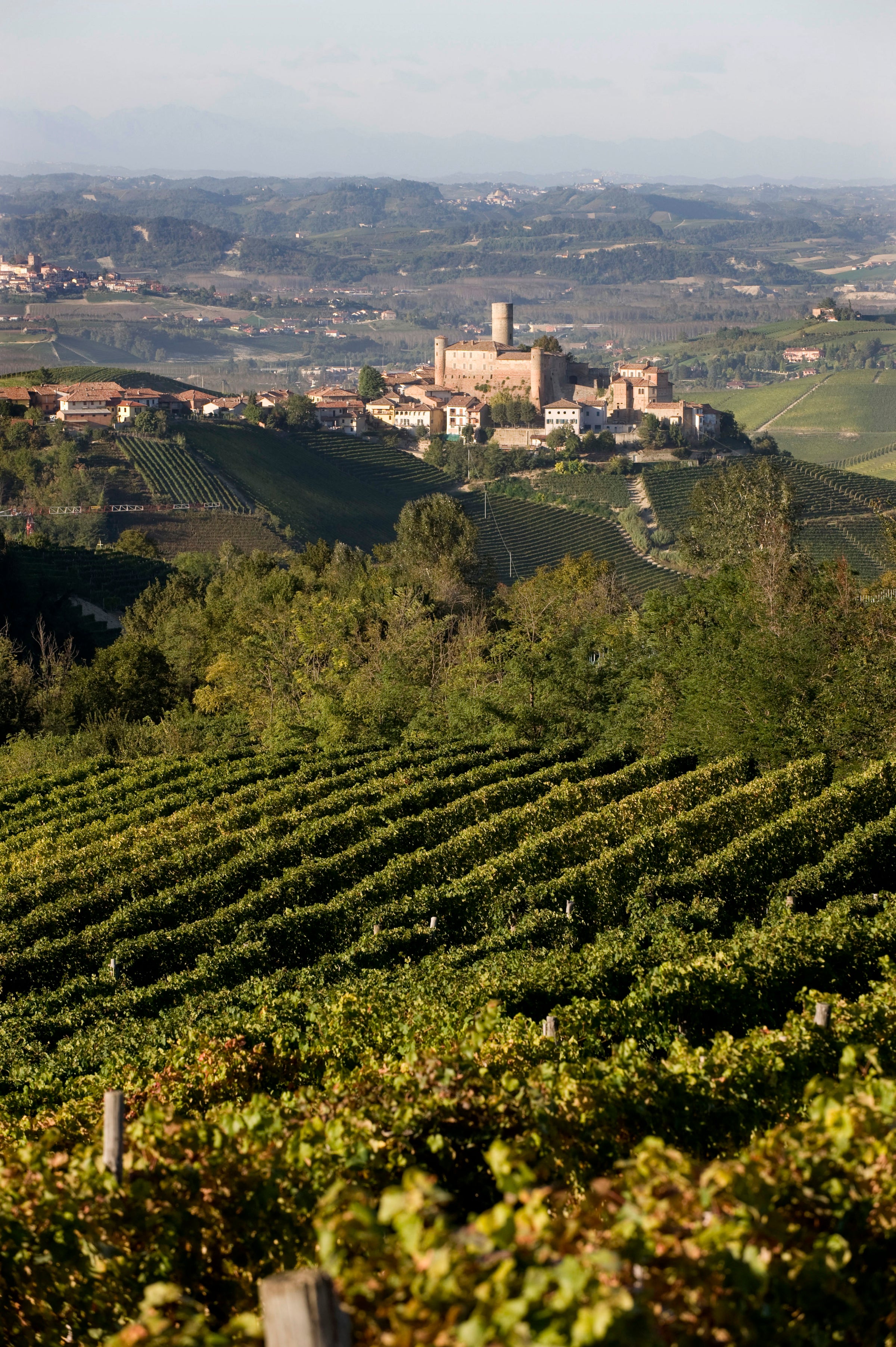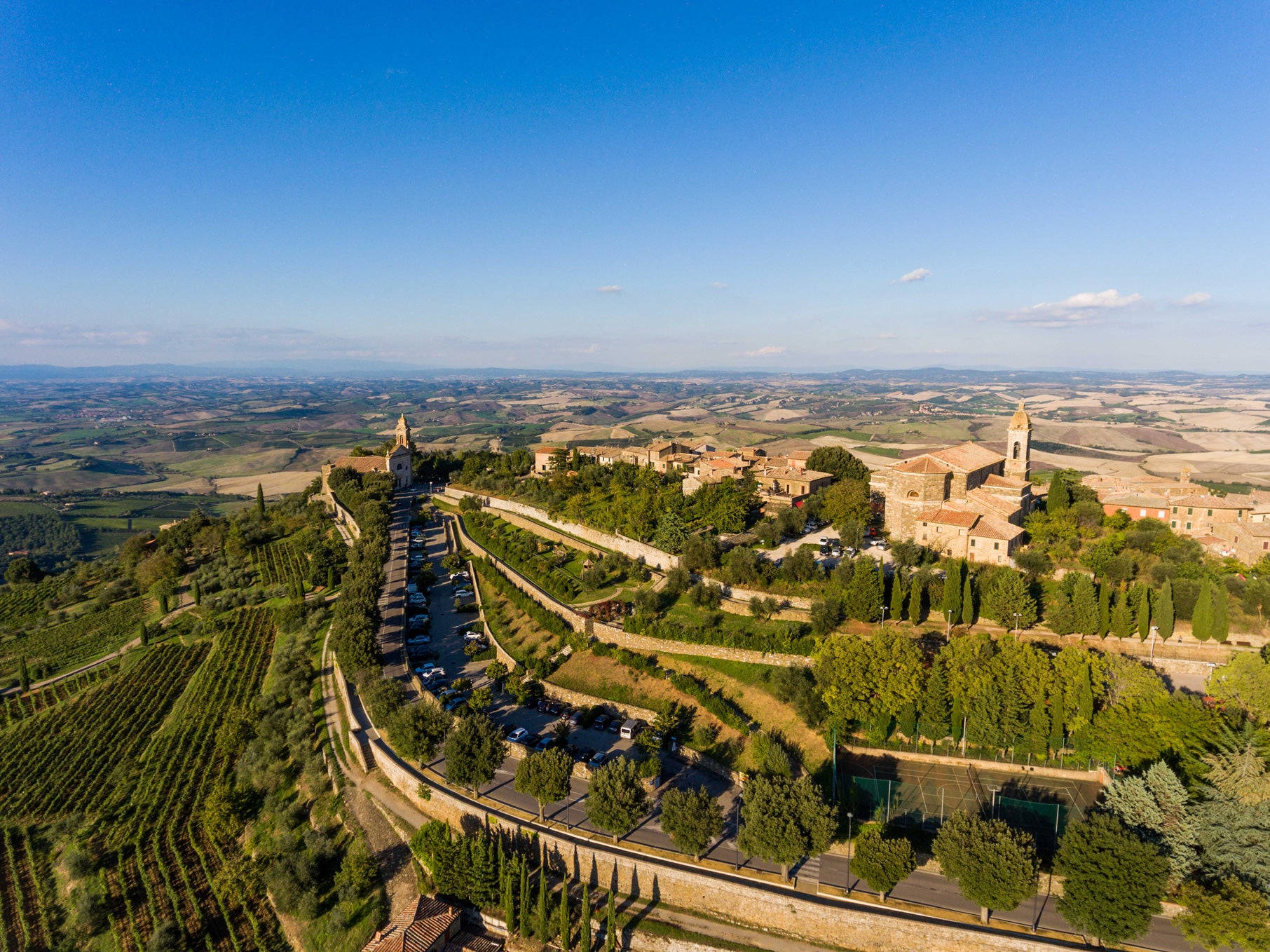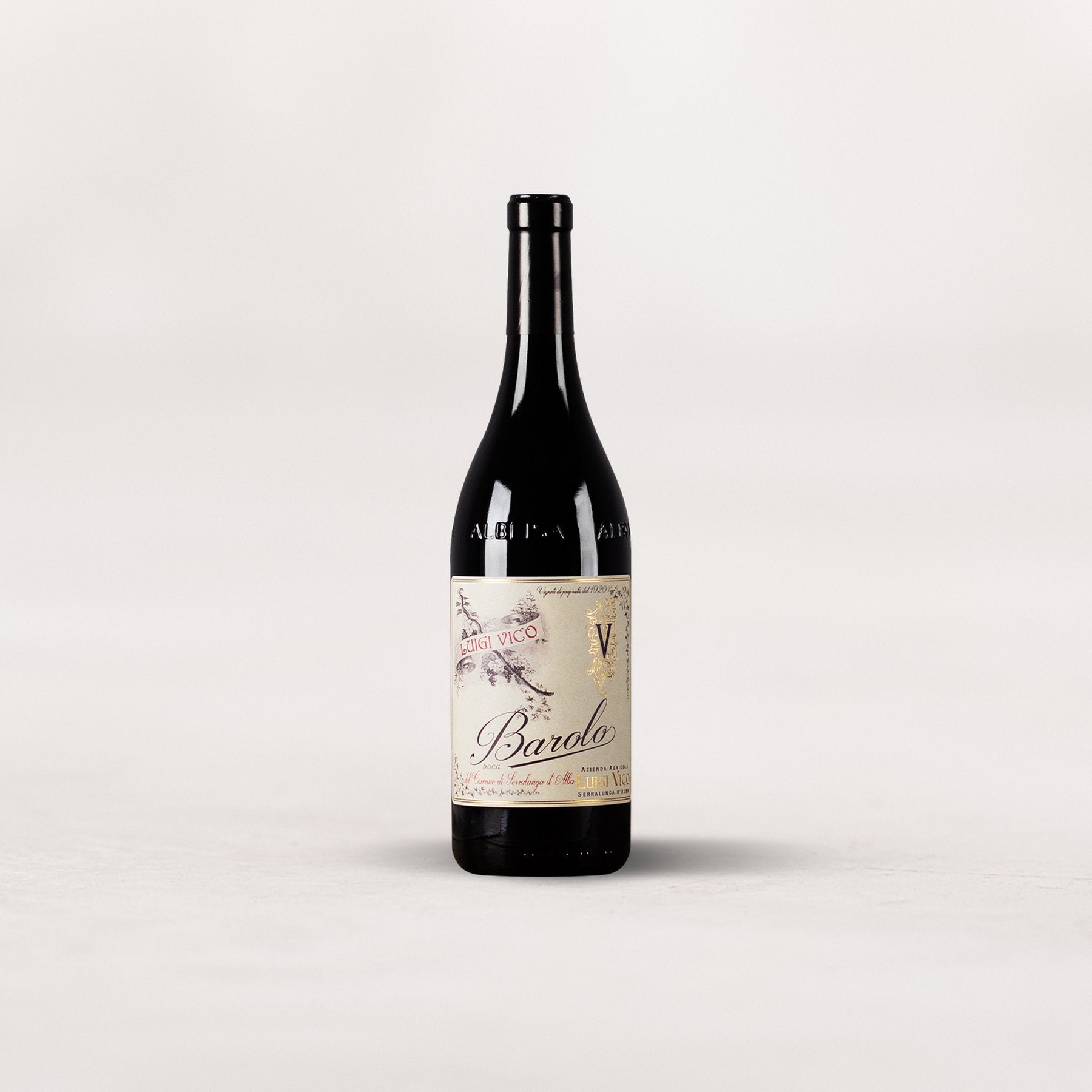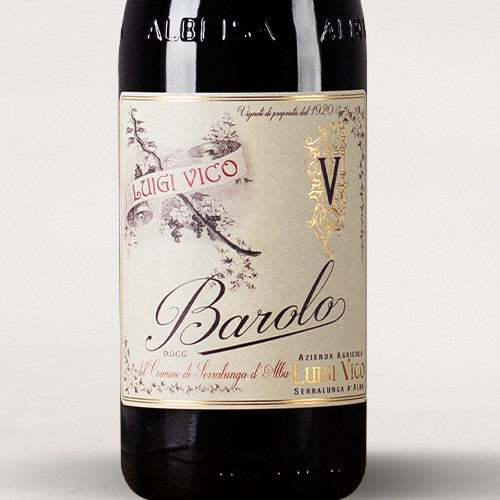To look at this wine’s label, you’d think it came from one of the oldest wineries in Barolo. In fact, Luigi Vico’s name didn’t appear on a bottle until 2016, but his classically styled Barolos have generations of family history behind them nonetheless. Vico hails from a family of grape-growers, who have farmed three small plots in the Barolo DOCG since the early 1900s. Luigi, a native of Serralunga—where his family’s piece of the famed “Prapò” vineyard headlines his five-acre heirloom collection—had long ago left agriculture behind for a life in Turin, but felt like the time had come to reconnect with his Barolo roots.
Vineyards he had once helped his grandparents maintain during summers off from school were nearing the end of long-term rental contracts, meaning that he could re-take control of them and make a wine bearing the Vico name. With the help of a talented neighbor—Davide Rosso, of the famed Giovanni Rosso winery—he did just that. We offered the “debut” 2016 vintage of this impeccably detailed, hauntingly perfumed wine, and despite the acclaim that vintage received, I think 2017 tops it. At the very least, this new release is more invitingly drinkable at this young stage, and yet it’s clear for all to see that it has many decades of evolution ahead. Vico is, to use a popular turn of phrase, crushing it. Get onboard now before these wines start shooting up in price!
Barolo drinkers know very well that there isn’t much “newness” in the region. For the most part, the same families have remained in the same places since before wines came in bottles with labels. When a new label does appear on the scene, it usually has a backstory like that of Vico’s: long-established vignaioli (vine-growers) decide to keep some of their prized fruit for themselves. To “put their name on the door,” so to speak. But again, it’s not like they’re starting from zero: We’re talking about beautifully positioned Nebbiolo vines in the heart of one of the world’s most legendary winemaking villages. There are no guarantees in life, but this is about as close as it gets.
Today’s 2017 is an example of the village-specific labeling that is now allowed under Barolo DOCG law: It is labeled “Barolo del Comune di Serralunga d’Alba,” which is akin to seeing a village name like “Gevrey-Chambertin” on a bottle of red Burgundy. Overall, the Vico family holdings extend over roughly five acres of land in three vineyards: “Prapò,” “Meriame,” and “Prato Done.” Although it doesn’t carry a vineyard designation, today’s wine hails entirely from the “Meriame” vineyard, a west-facing site in Serralunga first purchased by the Vicos in 1920. Farming is Certified Organic, and, to maintain biodiversity, Vico has kept fruit trees planted at the end of each vine row—a nod to the land’s prior use as an orchard.
The 2017 was again vinified under the watchful eye of Davide Rosso. The style is resolutely traditional: De-stemmed fruit from 30+-year-old vines was macerated on skins for an extended period during fermentation, after which the wine is aged in 15-hectoliter Slavonian oak botti before bottling. It is a taut, fine-edged style, not as burly as some Serralunga wines but plenty structured for extended aging. It’s a deep garnet-red in the glass and sends up a perfumed blast of woodsy aromas from the glass: black and red raspberries, dried cherry, cranberry, red currant, blood orange, leather, wild herbs, and a full dose of textbook “tar and roses” savor. It is full-bodied and firmly tannic—a wine clearly built for 10-20 years of aging—so if you are enjoying a bottle now, be sure to give it a good hour of air before serving at 60-65 degrees in large Burgundy stems. Food, too, is a necessity if you’re pulling the cork on this soon: This is exactly the kind of wine they invented Brasato al Barolo for, so look no further than the attached recipe. (And no, you should NOT use actual Barolo in the recipe!)
